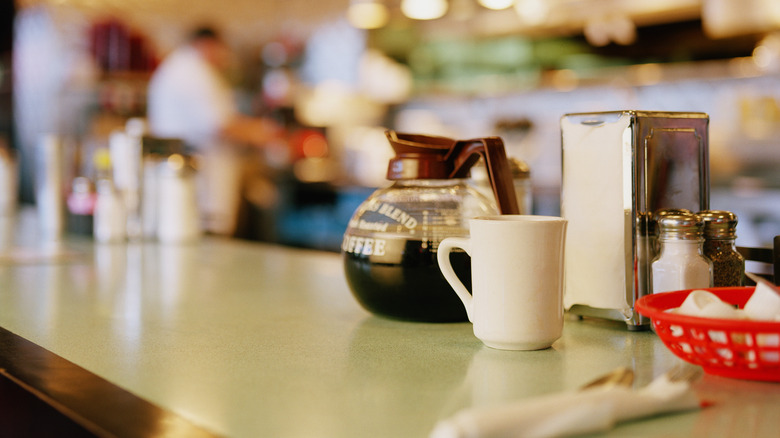Why Do Diner Menus Include So Many Different Options?
Diners in the United States are a nostalgic place for millions. Whether it was a first date with your high school sweetheart, the place to warm up with a coffee after shuffling in from a cold, rainy day, or your "Mommy-and-me" date after little league practice, diners hold a special place in our memories. Today, packed with people from all walks of life, diners have become the ultimate people-watching spot. But they didn't start out that way.
In the 1870s, diners began as food wagons serving pie, coffee, and a few other items for late-shift factory workers. These early food wagons eventually grew into railroad dining cars, keeping pace as factories shifted towards suburbia. As diner owners struggled to attract customers, they changed their tune from catering mostly working-class men to welcoming families and women. This change helped diners become a true staple of American culture, with bright neon signs reading "Open," symbolizing a place that brought people together. Over time, menus were expanded, and new foods and flavors were introduced alongside the classic diner offerings.
Today, diners are known for their endless menus, pages long, offering everything from numerous ways to fry eggs to the difficult choice between pancakes or waffles (pancakes always win, of course). You sit at a long booth, the extensive menu in hand, filled with breakfast, lunch, dinner, and dessert (if you saved room). And then there's the waitress, calling you "honey" in a way that's familiar and kind. From humbling beginnings to an American icon, diners have maintained their job of serving many, from morning breakfast rushes to late-night munchies.
How diners adapted to the growing food industry
Over the years, ownership among immigrants became more common, and as a result, many menus evolved to reflect the diverse tastes of their cultures. This shift expanded the menu and focused on making it versatile, resulting in the wide-ranging selection of food we see today. So, when you find everything from sandwiches to seafood dishes, alongside all-day breakfast options and a variety of pasta, you can thank the diner's owners for creating this menu of international cuisines.
With the rise of chain restaurants and fast food chains (including drive-thrus, which made quick meals even quicker), diners once again faced the challenge of staying relevant. To compete, many began offering 24-hour service and all-day breakfasts. These changes were meant to entice customers to choose diners over fast food.
While diners remain in America, their menu reflects that options can offer opportunities to try new foods, discover new favorites, and enjoy perusing a menu while chatting away with old friends. While the hope is that diners will continue their long history of serving everyone, only time will tell if the long menu will help or hurt their future.

